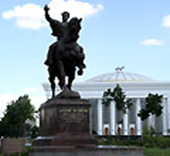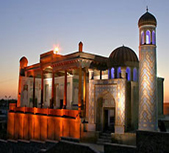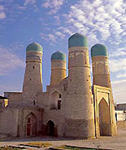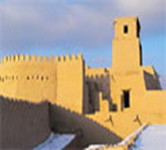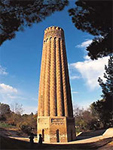|
Категории
|
The history of Samarkand
In the VI century BC expanding the boundaries of the state, the Persian king Cyrus conquered, among other lands, and Sogdiana. After almost two hundred years, in the spring of 329 BC, defeated the Persian army and the pursuit of Darius, the Greek-Macedonian army led by Alexander the Great invaded the territory of Central Asia. Having crossed the Amu Darya River, the troops marched into the Politimet valley (as the Greeks called Zarafshan, "very valuable") to Marakanda - the capital of Sogdiana, and captured the city. Some time later, an uprising breaks out in Marakand, which will soon cover the entire Sogdiana. Sogdian prince Spitamen few years will lead the continuous guerrilla war with parts of the regular Macedonian army. But in the end, the heroic uprising is brutally suppressed, Spitamen killed and the city of the Macedonian conqueror ordered destroyed.
Around 306 BC, Sogdiana become part of the Seleucid empire (Seleucus - one of the generals of Alexander the Great). Subsequently, the region will become part of the Greco-Bactrian kingdom, and in the first centuries of our era - under the rule of the Kushan Empire. This interest of the rulers of neighboring countries in the Samarkand was due to its favorable geopolitical location - across the city were the major caravan routes of the Silk Road from Syria, Turkey, Persia, India and China. About the middle of V century their rule over the lands of the Central Asian Eftalits dynasty sets, and later (in 565) Turkic khanate. Around the same time, the town was built a lead of centralized water supply pipeline "Arzis". In 712, on the Sogdiana will take campaign the Arabs. The invaders fired on the walls of Samarkand from the three hundred and missile weapons, causing massive destruction. Despite the stubborn resistance of the defenders of the city, after a month-long siege, Arab forces led by Kuteyba ibn Muslim occupied city.
Vacant Samarkand will experience new growth, will become the largest city in the region (up to half a million inhabitants), a haven of Sufis and scholars. The city is drowning in green gardens, blooming profusely in the microclimate of a vast network of pools and fountains, to produce paper, textiles, glass, ceramics, jewelry, and all around will be replaced by the ruling dynasty, first Tahirids, then (in the IX-X centuries) Samanids in the end of the X-XI centuries, Karakhanids, Ghaznavids, Seljuk Sultanate, in the XII Kara-Khitay and Khorezm shahs.
Genghis Khan died seven years later, shortly before dividing his empire among his sons (Samarkand will go to the Chagatai, second son of Genghis Khan). Empire will agonize almost half a century, until the coming to power Amir Timur, or create your empire from east to west - from Kashmir to the Mediterranean Sea, and from north to south - from the Aral Sea to the Persian Gulf, establishing in 1370 in Samarkand as the imperial capital.
Samarkand is decorated, the Empire is growing once again revived the trade routes from China to the Middle East, and again they meet in Samarkand. At this time, the Ottoman Empire in 1396 utterly breaks the knights of Europe and besieging Constantinople. Regent of Constantinople, the Emperor of Greece, the ruler of Venice offer Timur become an ally of Europe. Alliance invites him to himself Sultan Bayazid. Timur makes his choice, and July 28, 1402 with its twenty thousandth army breaks Bayazid at Ankara. After 500 years, the grateful French in Paris, will establish a gilded statue of Timur, which will sign the "Savior of Europe".
After Ulugbek he's descendants would rule Samarkand, and not very long Timurid Zahiriddin Babur - the founder of the Mughal state in India. In the international sphere, the Empire begins to lose its former greatness. Ottoman Turks conquer all Middle East and seize the ports of the Mediterranean Sea, through which the trade took place along the Silk Road. Caravan routes through Samarkand again lose its value. The decline of trade and handicraft production leads to stagnation in the economic life of the country.
After a century, at Mangyt Dynasty, Samarkand will be part of Bukhara Khanate. At that time Samarkand emir Bahodur Yalangtush ("open-chested hero", so nicknamed after a while one of the battles left without armor and coats, and continued to fight) for their funds to build two more madrasas - Tilla-Kori and Sherdor on the Registan Square. At the end of the XVII-th and first half of the XVIII-century time of troubles will come. There was a time when Samarkand empty, the madrassas will live tigers and wolves, and the total population of nearly one thousand families. Life in the city reborn in the late 70s XVIII-th century. In the city moved some residents of neighboring towns, new neighborhoods and rebuilt the city walls. The city will once again live. Again, gardens bloom, and in irrigation ditches ("channels") will run the water. May 2, 1868 Samarkand was occupied by Russian troops and incorporated into the Russian Empire. The city began to grow and develop industry, buildings and roads are built European-style. The role of Samarkand will increase even more due to the gasket in the 1888 Trans-Caspian railway.
October 18, 1996 in celebration of the 660th anniversary of Timur, the first President of Uzbekistan Islam Karimov gave the city an honorary Order of Amir Temur and the proposed set this day as an official Day of the City. Sights of Samarkand
Where else can you go to Samarkand?
|
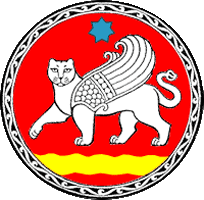 In the I-th millennium BC, the Sacred Book of the Zoroastrians "Avesta" recorded in its pages a description of a developed agricultural area in the valley of the Zarafshan (in Persian - "gold bearing"). The area is named in the book - Sogdiana, and, thanks to the biographer of Alexander the Great - Arrian, we know the name of its main town - Marakanda.
In the I-th millennium BC, the Sacred Book of the Zoroastrians "Avesta" recorded in its pages a description of a developed agricultural area in the valley of the Zarafshan (in Persian - "gold bearing"). The area is named in the book - Sogdiana, and, thanks to the biographer of Alexander the Great - Arrian, we know the name of its main town - Marakanda.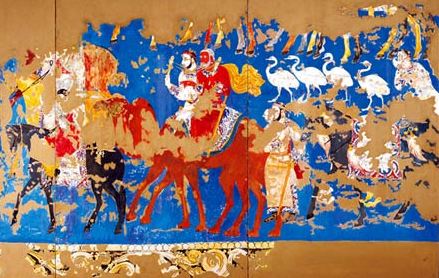 What is the exact time Marakanda remains in ruins is unknown, but the town revived in the south-western part of Afrosiab. According to ancient legend, the city erected to provide a link between the will and the will of heaven, earth, and everything will help to ensure that the connection between them is not interrupted. In Samarkand is an epithet - Mahfouz ("Stored"), and for at least three thousand years, the city will recover, no matter what.
What is the exact time Marakanda remains in ruins is unknown, but the town revived in the south-western part of Afrosiab. According to ancient legend, the city erected to provide a link between the will and the will of heaven, earth, and everything will help to ensure that the connection between them is not interrupted. In Samarkand is an epithet - Mahfouz ("Stored"), and for at least three thousand years, the city will recover, no matter what.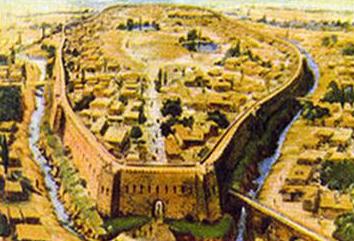 At the beginning of 713 years in Samarkand uprisings. Come to the aid of Sogdians steppe Turks. Rebellion will accompany the whole period of Arab rule. But the biggest rebellion breaks out in a 770-s led Mukanna. In 806 the year, the desperate people of Sogdiana led by warlord Rafi Ibn Lais, with the support of the Turks will drive away the invaders. But the Arab Caliph once again bring together an army, and personally lead a new campaign. In 809, Samarkand again be taken. However, mindful of the bitter experience of past uprisings, the Caliphate will return the right to rule the local nobility, obliging her, though from time to time to pay taxes.
At the beginning of 713 years in Samarkand uprisings. Come to the aid of Sogdians steppe Turks. Rebellion will accompany the whole period of Arab rule. But the biggest rebellion breaks out in a 770-s led Mukanna. In 806 the year, the desperate people of Sogdiana led by warlord Rafi Ibn Lais, with the support of the Turks will drive away the invaders. But the Arab Caliph once again bring together an army, and personally lead a new campaign. In 809, Samarkand again be taken. However, mindful of the bitter experience of past uprisings, the Caliphate will return the right to rule the local nobility, obliging her, though from time to time to pay taxes.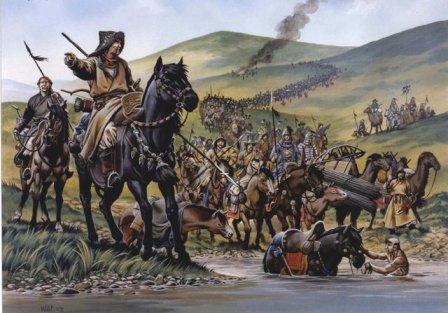 Meanwhile, in the east, the Mongol tribes united under the rule of Genghis Khan. Genghis Khan's army will come to Samarkand March 17, 1220. While preparing for the siege of residents of the local elite treachery will open the gate. Someone will be killed, would take most of the prisoners for the war effort, about 30 000 artisans and craftsmen get stolen in Mongolia. The city is devastated. In order to be reborn again later.
Meanwhile, in the east, the Mongol tribes united under the rule of Genghis Khan. Genghis Khan's army will come to Samarkand March 17, 1220. While preparing for the siege of residents of the local elite treachery will open the gate. Someone will be killed, would take most of the prisoners for the war effort, about 30 000 artisans and craftsmen get stolen in Mongolia. The city is devastated. In order to be reborn again later.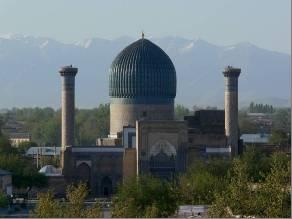 As conceived by Timur the greatness and beauty of Samarkand were to overshadow all the capitals of the world. Are built magnificent palaces, Gur-Emir mausoleum, Bibi Khanum mosque, a number of mausoleums Shokhi Zinda, which still amaze with their beauty and splendor. Samarkand is buried in the greenery of the surrounding 12 gardens and the vicinity of the villages are built up with the names of the capitals of the world - Misr (Cairo), Dimishk (Damascus), Baghdad, Sultania, Farish (Paris), etc.
As conceived by Timur the greatness and beauty of Samarkand were to overshadow all the capitals of the world. Are built magnificent palaces, Gur-Emir mausoleum, Bibi Khanum mosque, a number of mausoleums Shokhi Zinda, which still amaze with their beauty and splendor. Samarkand is buried in the greenery of the surrounding 12 gardens and the vicinity of the villages are built up with the names of the capitals of the world - Misr (Cairo), Dimishk (Damascus), Baghdad, Sultania, Farish (Paris), etc.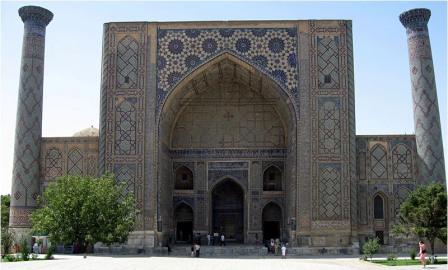 After 4 years after the death of Timur the country will begin to rule his grandson - fifteen year old Mirzo Ulugbek - the great scientist, a 40-year era of the board which will be held under the motto "The pursuit of knowledge - the duty of every Muslim". The main brainchild of Ulugbek is its Madrasah (University) on Registan Square and the Observatory, which has no equals either then or years later. October 25, 1449 Ulugbek was killed on the orders of his own son Abdulatif. After five and a half months, he Abdulatif be executed, his head would hang on the portal Ulugbek Madrasah, and write on the grave - "patricide"
After 4 years after the death of Timur the country will begin to rule his grandson - fifteen year old Mirzo Ulugbek - the great scientist, a 40-year era of the board which will be held under the motto "The pursuit of knowledge - the duty of every Muslim". The main brainchild of Ulugbek is its Madrasah (University) on Registan Square and the Observatory, which has no equals either then or years later. October 25, 1449 Ulugbek was killed on the orders of his own son Abdulatif. After five and a half months, he Abdulatif be executed, his head would hang on the portal Ulugbek Madrasah, and write on the grave - "patricide"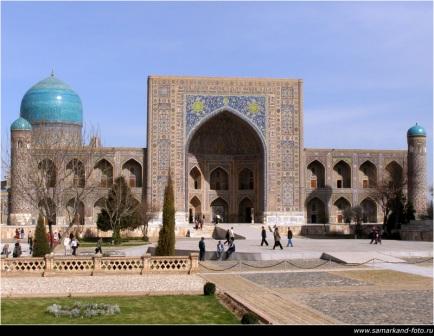 In the XVI-century power grabs Sheibanids dynasty, which united the Turkic tribes, but then the power goes to the Ashtarkhanids. The capital moved to Bukhara, but Samarkand, however, remains a major city in the continued development of the sciences and crafts.
In the XVI-century power grabs Sheibanids dynasty, which united the Turkic tribes, but then the power goes to the Ashtarkhanids. The capital moved to Bukhara, but Samarkand, however, remains a major city in the continued development of the sciences and crafts.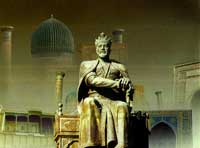 In 1917 the Soviet government would come. In 1991 the Soviet period of history has ended, and Uzbekistan, along with other former Soviet republics declared their independence.
In 1917 the Soviet government would come. In 1991 the Soviet period of history has ended, and Uzbekistan, along with other former Soviet republics declared their independence.